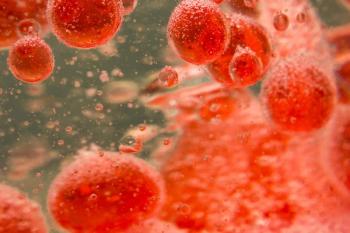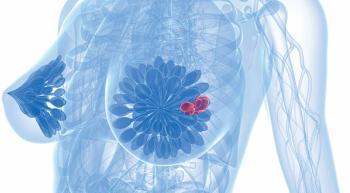
microRNA-based Signatures Predict irAEs in Patients Receiving Anti–PD-1 Treatment
Data from a study shared at the 2025 ASCO Annual Meeting showed that a microRNA-based model was able to predict irAEs in various cancers for those on anti–PD-1 therapy.
A previously developed microRNA-based genetic signature that predicted immune-related adverse event (irAE) risk for patients receiving anti–PD-1 therapies who have heavily pretreated melanoma recently demonstrated the ability to predict irAE risk in a non–heavily pretreated cohort of patients with nonmelanoma cancers.1,2
Joanne B. Weidhaas, MD, PhD, MBM, a professor in the Department of Radiation Oncology, vice chair of the Division of Molecular and Cellular Oncology, and director of translational research at the David Geffen School of Medicine at UCLA Health Jonsson Comprehensive Cancer Center; cofounder of MiraDx; and founder of MiraKind, shared these results in a poster at the
This new study included patients with melanoma, genitourinary cancers, non–small cell lung cancer, and head and neck squamous cell carcinoma, among others.
The model predicted late irAE toxicity in those with 10 microRNA-based single-nucleotide polymorphisms (mirSNPs) with 0.692 sensitivity, 0.861 specificity, 0.383 positive predictive value (PPV), 0.957 negative predictive value (NPV), and 0.776 area under the curve (AUC); the baseline clinical models showed 0.538 sensitivity, 0.788 specificity, 0.241 PPV, 0.932 NPV, and 0.663 AUC.
Acute toxicity was predicted with 18 mirSNPs vs with baseline clinical models with 0.700 vs 0.533 sensitivity, respectively; 0.804 vs 0.730 specificity; 0.344 vs 0.225 PPV; 0.948 vs 0.914 NPV; and 0.752 vs 0.632 AUC.
Weidhaas stated that they expanded the selection of patients to those who had not received prior treatment because they anticipated more patients would be young and healthy. She also emphasized that, though there is a lot of interest in analyzing tumor biomarkers, they anticipated that there would also be patient biomarkers that predicted irAEs.
Transcript:
In this analysis, we previously identified a microRNA-based signature identifying patients at risk of toxicity. In that first work that was published, they were very heavily pretreated patients, and we wanted to expand the work to currently treated patients, for whom many patients can receive checkpoint inhibitors now. Often, they’ve never had any treatment before and they maybe just had surgery; they’re young, and they’re healthy. We suspected it would be a broader, genetic population of people.
This was a much larger study with over 250 patients, and we studied the timing of toxicity because what we found treating patients [is that] there's a group who have severe irAEs, which was the purpose of the study: to look at patients who would have these irAEs after checkpoint therapy. There’s evidence in clinical experience that there are people who experience toxicity very quickly, within a few cycles, and then others who will do fine for a year and then develop these irAEs. We wanted to see if we could find different genetic [signatures] predicting that. There’s also a lot of interest in trying to understand who will have a good outcome and respond to checkpoint therapies; there’s certainly tumor influence on that and a lot of work looking at tumor biomarkers. We suspected there’d be patient biomarkers too, predicting how your immune system was wired and would respond. We looked at responses as well as the different timing of toxicities, specifically irAEs.
References
- Weidhaas J, Marco N, Scheffler AW, et al. Germline biomarkers predict toxicity to anti-PD1/PDL1 checkpoint therapy. J Immunother Cancer. 2022;10(2):e003625. doi:10.1136/jitc-2021-003625
- Weidhaas JB, McGreevy K, Drakaki A, et al. microRNA-based signatures of early and late immune-related adverse events to anti-PD1 treatment. J Clin Oncol. 2025;43(suppl 16):2661. doi:10.1200/JCO.2025.43.16_suppl.2661
Newsletter
Stay up to date on recent advances in the multidisciplinary approach to cancer.

















































































